Ever since cavepeople etched notches into bones, the concept and action of counting have defined the architecture of the human mind. There’s plenty of evidence that other animals count and use mathematics to survive, like Tunisian desert ants who use geometry instead of scents and landmarks to find the most direct paths back to their colonies. But for humans, counting is intrinsic to our personal development. It’s one of the first things we learn to do as kids. We walk, talk, and count. We learn how to count to “four” before we can even read it. Counting is one of the initial ways we comprehend our bodies—10 fingers, 10 toes, two eyes, one nose, one mouth. One of the oldest games to survive into the modern era, mancala, is based entirely on counting.
So when I say Gunbrick: Reloaded is one of the most basic games I’ve played in a while, I’m not saying that to insult it. I’m saying that because it’s a game that posits counting as its main gameplay mechanic. Maybe a better way to describe it would be “fundamental.” It’s the mancala of puzzle-platformers.
As I stated in my review of Bomb Chicken, developer Nitrome has precisely designed games around singular mechanics for almost two decades now, mostly in the Flash and mobile spaces before its console debut in 2018. Gunbrick: Reloaded, adapted from the mobile version, is Nitrome’s second game to appear on the Switch and PC, and it’s an even purer distillation of what makes the British studio so special.
Like Bomb Chicken, Gunbrick starts with a core concept and builds everything around that. In this instance, you play as a square that’s equipped with a shield on the top and a gun on the bottom. Of course, direction is relative in this instance, as the titular gunbrick rolls as one might expect a square to roll: one side after the other. You can propel yourself forward with your gun when lying on your side, and you can reach higher areas by rocketing yourself upwards with that gun while protecting yourself against projectiles with the shield side. It’s that simple—and Nitrome, as it did with Bomb Chicken, creates increasingly complicated levels and puzzles around this one core design.
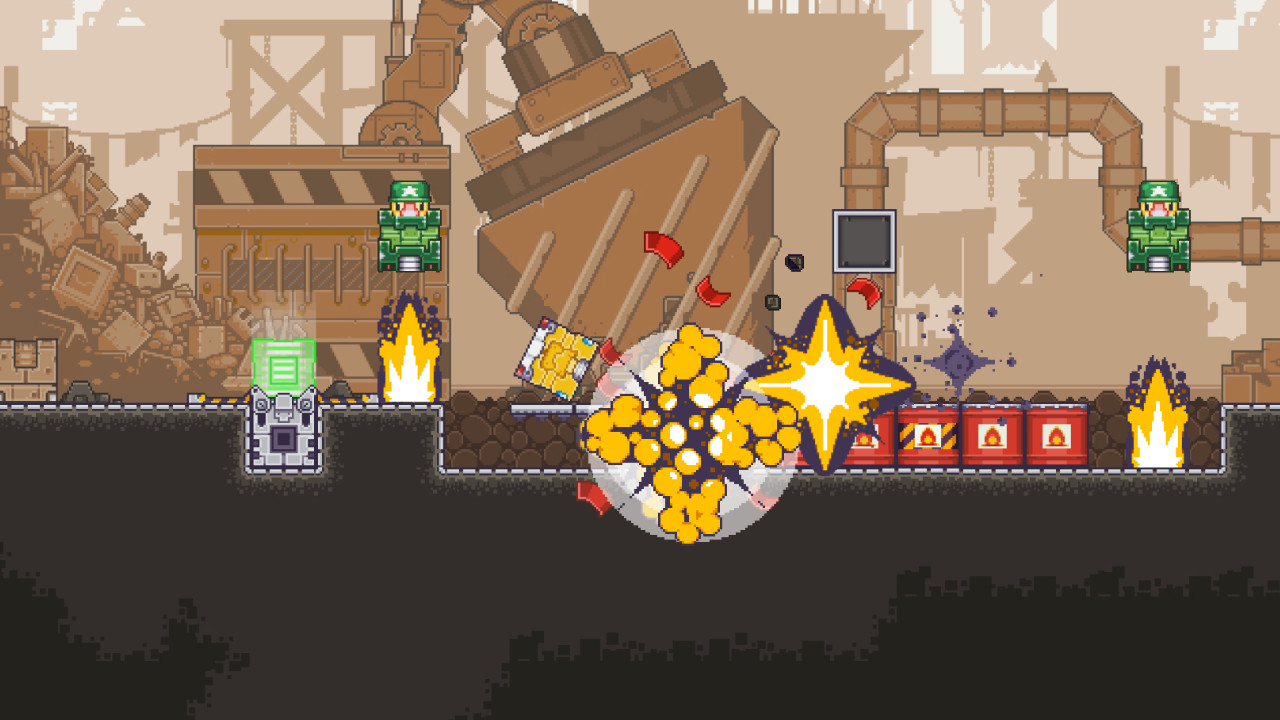
Sure, you have a gun, which means there are enemies that you will kill, but the main mechanic in Gunbrick is counting: how many spaces do you have to go, how many steps with the gunbrick can you take, and what side will be facing upwards when you finish taking those steps? Sometimes, you’ll need your shield facing a certain direction to block a fire trap, or you’ll need your gun facing a certain direction so you can blow up an obstacle or an enemy. Take four steps, and your gunbrick will be back in its original orientation, just four steps further ahead; take two, and you’ll be upside-down. On the outside, it might look like a Super Nintendo platformer, but the skills you’re really using are similar to those you need to solve sliding puzzles.
Gunbrick’s levels start off simply enough; you probably won’t have to do many calculations for at least the first set of levels, or at least you won’t be conscious of doing so. But as you progress through the game, Nitrome’s level design will force you to be more aware of the number of spaces in a stage, as well as making the best use of your gun as a traversal tool. Of course, you can rocket yourself upwards with the gun, but you can only go straight up. Likewise, when lying on your side, you can propel yourself in the opposite direction your gun is facing. This resembles a physical action, but in actuality it’s addition and subtraction. If you need to move five spaces, but doing so normally will leave your gunbrick in a compromised position, using the gun to scoot a space forward subtracts the amount of revolutions your gunbrick will need to make.
I know that sounds overly abstract and complicated, so let me use some visuals to illustrate. In this image, I need to move five spaces to get under the platform so that I can boost myself upwards to the next level:
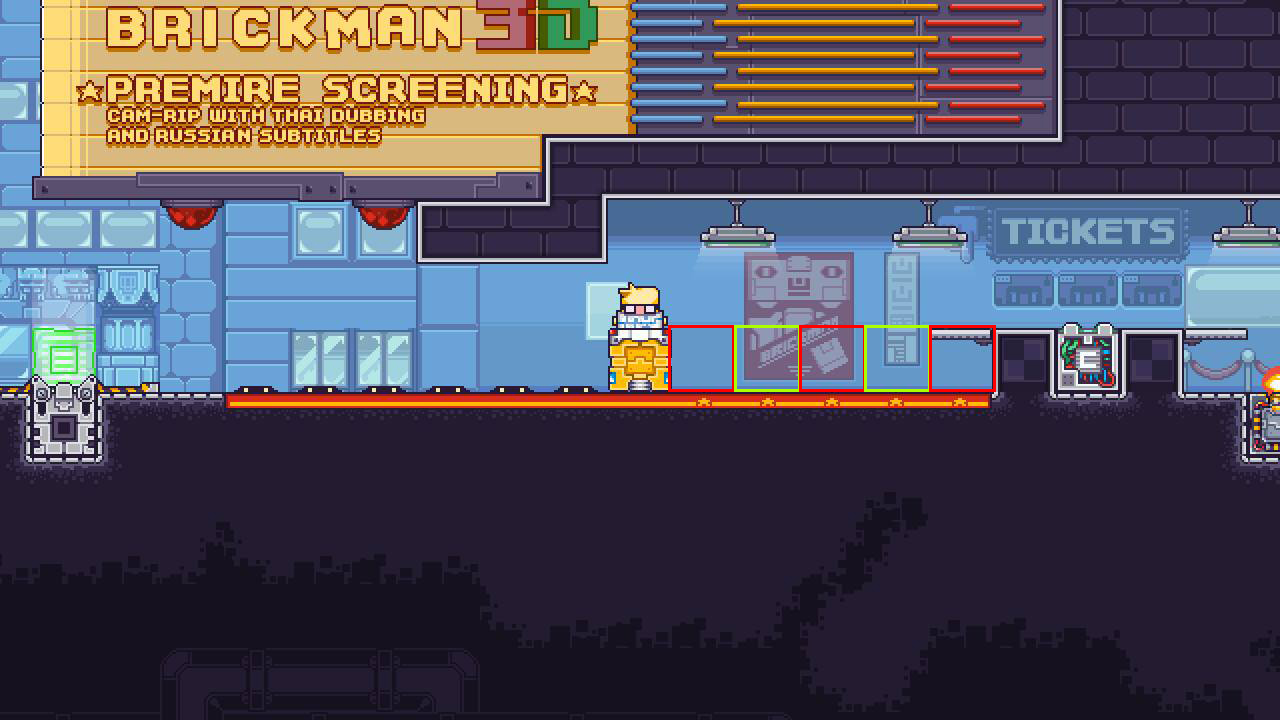
But the problem is that I need to be upright to boost myself upwards. From my current position, I will be upwards again after taking four steps, but on the fifth step I’ll be on my side.
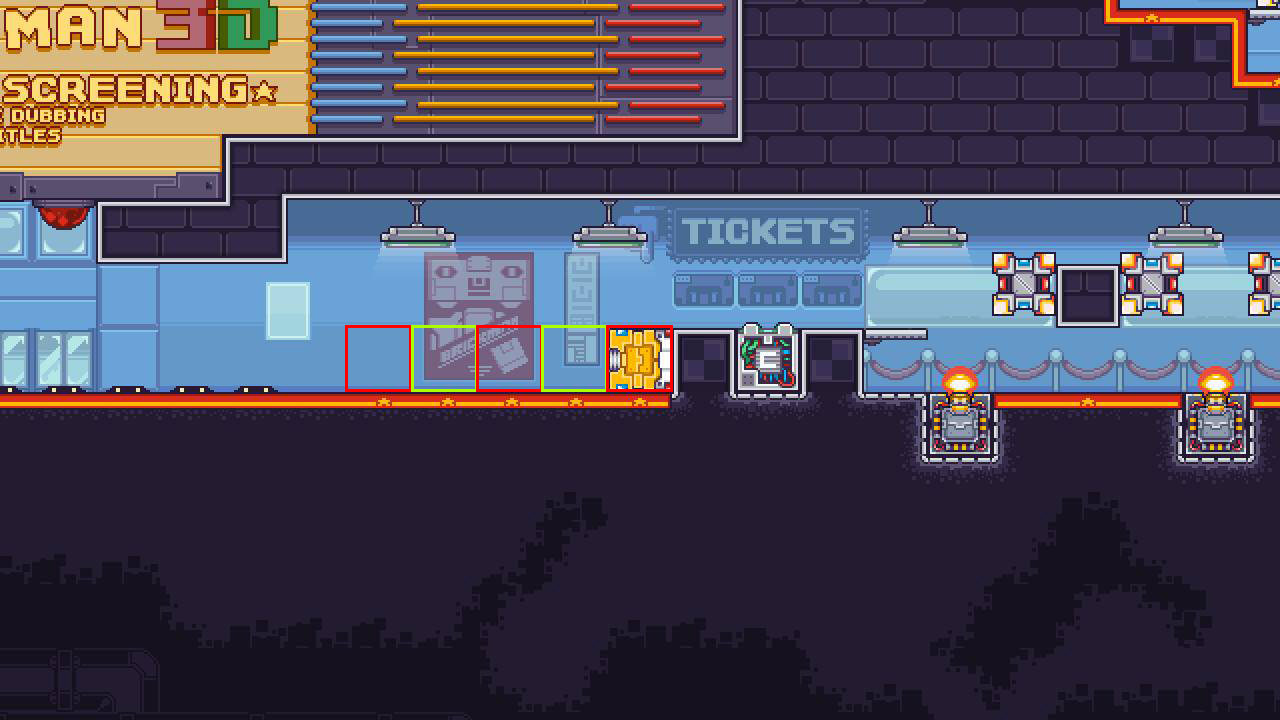
So in order to be in the correct position after my fifth step, I need to eliminate one of those steps by lying on my side and propelling myself forward, thus skipping a revolution of my gunbrick.
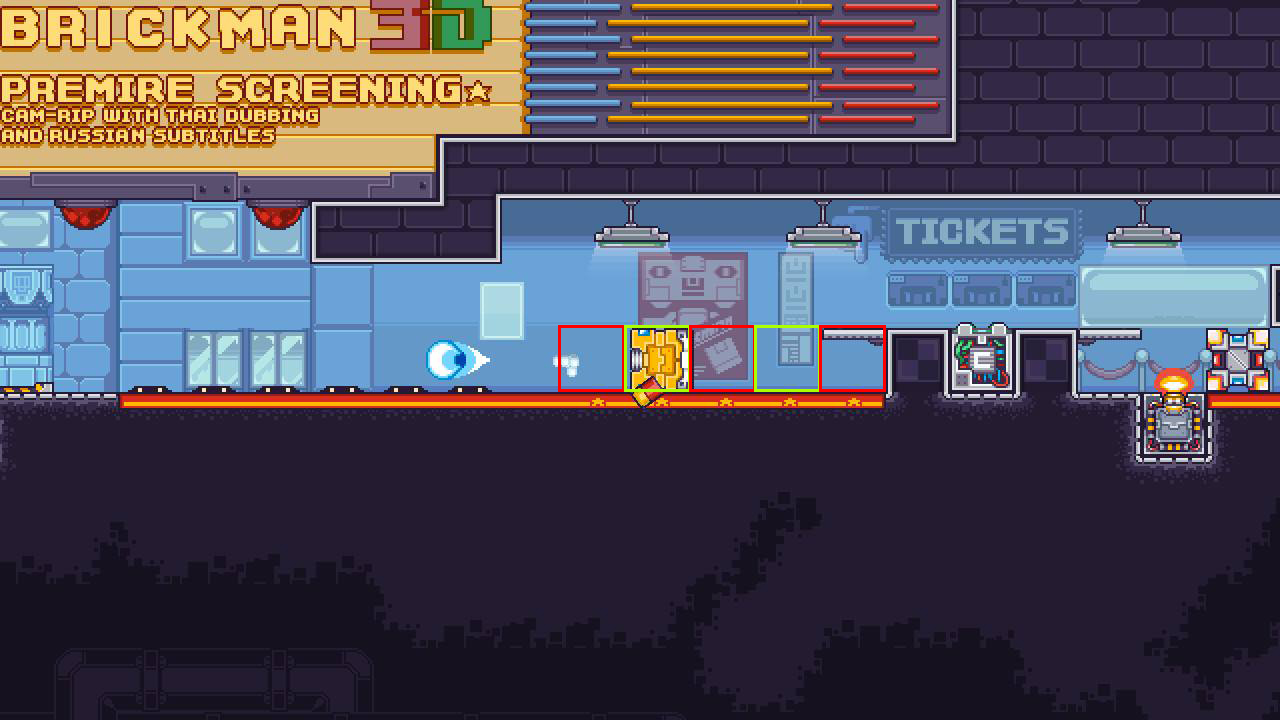
Five minus one equals four, and there we go.
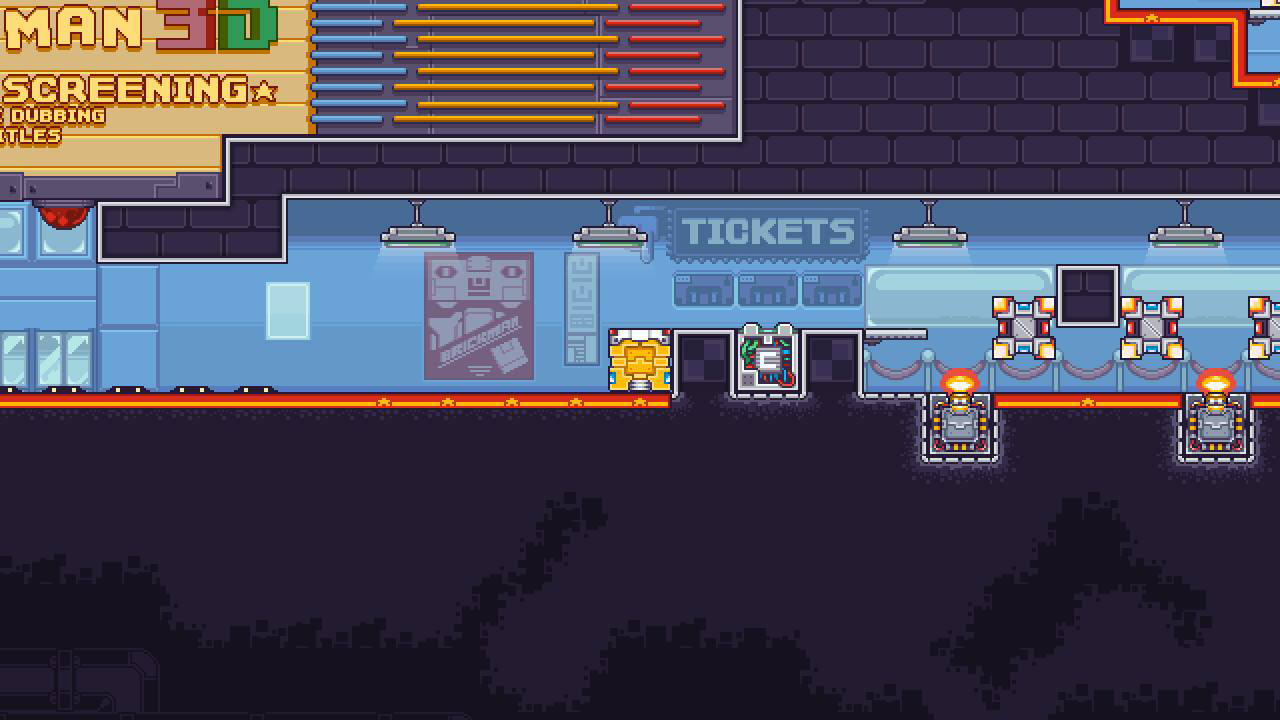
Maybe I’m as unevolved as our bone-etching ancestors that counting as a gameplay mechanic seems exciting and fresh to me. In theory, I can see why you’d think that. But in practice, and with Nitrome’s penchant for dastardly level design, Gunbrick turns counting into a tense and brain-twisting exercise of visualization and space. In later levels where the hazards move when you move, counting accurately becomes a life-or-death situation. This basic design is dressed up in Nitrome’s signature art style of bright HD pixel art, superb audio and visual design, catchy chiptune music, and the crunchiest of animations, resulting in an overall package of intoxicating brain candy, especially for an aging gamer like myself.
The “Reloaded” in Gunbrick: Reloaded refers to the extra content added to the updated version of the game. But where most developers would probably just add new levels on top of the already existing ones, Nitrome has taken it a step further by adding an entirely new dimension—specifically, the third dimension.
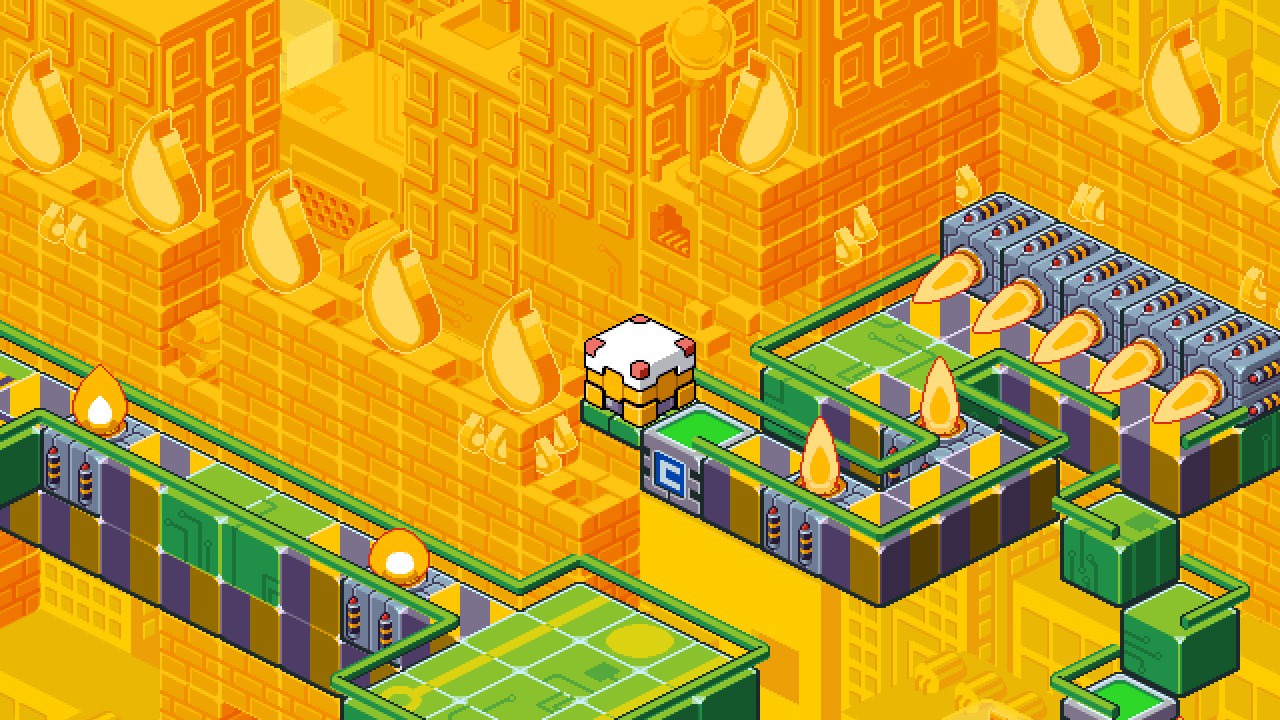
In these new levels, your gunbrick turns into a guncube, and you have to manipulate it accordingly. The controls are basically the same, but this added dimension allows you to roll your guncube on its side like a barrel so that its top and bottom are still facing the same direction as when you started. Of course, that comes with its own caveats, particularly in how your counting and spatial awareness needs to grasp more complex level design. Additionally, there are new, retro-style levels that are simpler versions of the base, 2D levels. These, admittedly, aren’t as engaging as the other two level types but can still provide a fun end cap to your experience with the game.
The only real complaint that I can make against the 3D levels is how you unlock them. Instead of just giving you these levels outright, Nitrome has locked them behind collectibles that you’ll have to find throughout the regular stages. Most of these collectibles are easy to reach, but there are a couple that are incredibly difficult, even if you’ve beaten the main game. In the same way that past Battlefield titles have locked DLC content behind dumb challenges even though you paid to access them, Gunbrick: Reloaded locks the only new content behind your ability or willigness to get it.
While we’re counting down the days until we can finally emerge from our homes, Gunbrick: Reloaded turns one of humanity’s most intrinsic mental functions into a mind-bending puzzle-platformer. Part of me would love to see Nitrome tackle more complex game mechanics now that it’s moving beyond the mobile space. What could they do in a more complicated space? The other part of me, however, is glad that the studio sticks to its gun(brick)s and continues to focus on the basics.
All images: Nitrome Ltd.
|
★★★★☆
Nitrome’s signature is designing increasingly complex levels out of the most basic gameplay mechanics, and Gunbrick: Reloaded shows how well that formula can work—even when that mechanic is as simple as counting. Add to that brilliant level designs and a quality retro art style, and you have another gem in the developer’s next stage of existence. While it’s a shame that the new content in this rerelease is locked behind challenges, that doesn’t take away from the quality of the new content. |
Developer Nitrome Ltd. Publisher Nitrome Ltd. ESRB E10+ - Everyone 10+ Release Date 04.09.2020 |
| Gunbrick: Reloaded is available on Switch and PC. Primary version played was for Switch. Product was provided by Nitrome Ltd. for the benefit of this coverage. EGM reviews on a scale of one to five stars. | |

Michael Goroff has written and edited for EGM since 2017. You can follow him on Twitter @gogogoroff.